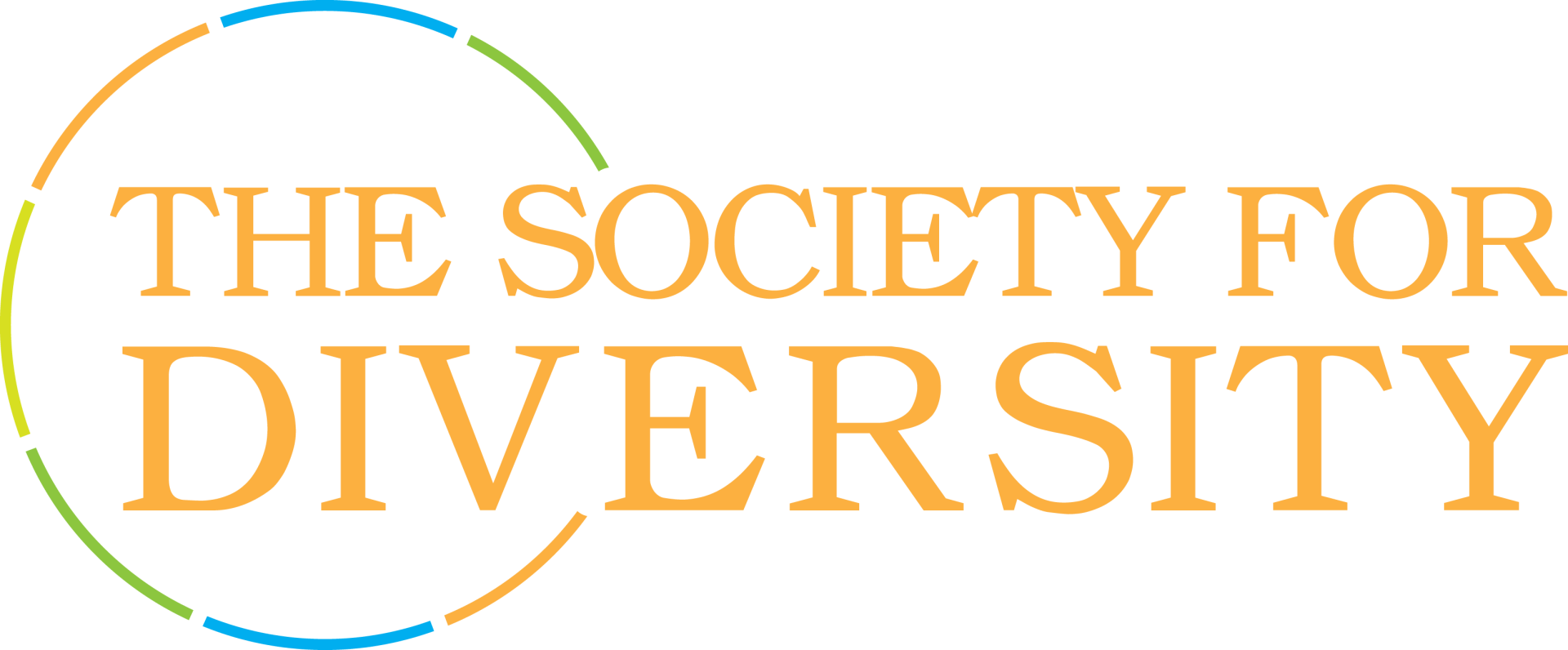diverse stories inclusive organizations harnessing the power of storytelling to promote diversity and inclusion
diverse stories inclusive organizations harnessing the power of storytelling to promote diversity and inclusion
Corporations thrive when they foster diversity in the workplace, but building a truly inclusive organization and harnessing the power of that diversity must prioritize enabling each person to bring their full selves—and their diverse stories—to work.
diverse stories inclusive organizations harnessing the power of storytelling to promote diversity and inclusion
Corporations thrive when they foster diversity in the workplace, but building a truly inclusive organization and harnessing the power of that diversity must prioritize enabling each person to bring their full selves—and their diverse stories—to work.
diverse stories inclusive organizations harnessing the power of storytelling to promote diversity and inclusion
Unlike those previous LGBTQ+ generations, I didn’t have to operate in the corporate closet for my entire career. Their decades of advocacy and activism led to a major breakthrough just two months after our arrival in Cincinnati. In the fall of 1992, sexual orientation was added to P&G’s corporate non-discrimination policy. I have watched and even helped build on that foundation over the past three decades as we have implemented LGBTQ+ diversity training, same-sex partner benefits, transgender health benefits, and parental leave equalization. While I did not always personally benefit from the changes—and even had to leave the company and the state of Ohio for eighteen months in order to legally adopt my own children—I’ve fought hard alongside the other activists and allies to ensure that the LGBTQ+ employees that have come after me do not walk into the same difficult choice that I was once faced with. And I am grateful every day that I fought with Cindy at my side.
LGBTQ+ non-discrimination policies have become standard in many industries: ninety-three percent of Fortune 500 companies have non-discrimination policies that include sexual orientation; ninety-one percent have policies that include gender identity, adding to the hard-won non-discrimination policies on both the corporate and federal levels for race and differently-abled people. These policies are not just driven by a sense of equality, justice, or fairness; prioritizing diversity and inclusion is a vital business practice. For corporations, it elevates their collective thinking, improves their ability to win in the marketplace, and is essential in order to attract and retain the best candidates:
- 67% of job seekers consider workplace diversity an important factor when considering employment opportunities, and 57% of current employees want their workplace to increase diversity.
- Companies with higher-than-average gender diversity financially perform 46% to 58% better than companies below the median.
- Companies with higher-than-average diversity have 19% higher innovation revenues.[3]
- Companies in the top quarter for racial/ethnic diversity are 35% more likely to surpass peers.[4]
- Companies that track multiple diversities in employees—both inherent and through life experience—are 45% more likely to capture a larger portion of their market and 70% more likely to enter into new markets.[5]
The message is clear: if a corporation wants to be the best, they need an employee body that reflects the astounding diversity in our world.
At P&G, we celebrate the progress we have made, while also acknowledging that truly harnessing diversity and equality is built on the foundation of non-discrimination. Our work isn’t done when people stop being afraid of being dismissed because of who they are, but when they are empowered to bring their full selves to the job, empowered to unleash their voices, their gifts, and their greatest work. The full power of diversity is more than just tolerance within a corporation or in the world at large—it is embracing the differences in people and their experiences that build strength and provides valuable perspective. It isn’t enough to just ensure that our employee body is diverse; we must continue to work towards making it inclusive.
That is a bigger and more nebulous goal. Though not without issue, there are many data-driven ways to increase diversity, but there is no precise way to measure inclusion, no recruitment policies to ensure that an employee can bring the full and wondrous breadth of their perspective, experience, and self to the office. We cannot learn everything we need to learn about and from each other by looking at statistics and rosters. There is immense and immeasurable power in our stories, and until corporations can find ways to fully embrace and promote those stories, we cannot bring the full potential of ourselves to the job.
Though I was able to breathe easier after I gained workplace protections, guarantees of non-discrimination did not empower me to bring my full self to work. Early in my career, I was assured that my humanity would be tolerated; it took me nearly two more decades of developing one-on-one relationships, choosing to be vulnerable, working to further my position, and watching the corporate culture change before I believed that I could be more than just tolerated, but valued and embraced. Though it was not always smooth and easy, the more co-workers I shared my story with, the more connections we formed. The more of their stories they shared with me, the more I learned. We built camaraderie, comfort, and the ability to create amazing things together one story at a time. Not one of us alone could bring the sheer variety of backgrounds, motivations, and perspectives we hold, but we truly become a body larger than any individual through sharing our stories and working with the acquired wisdom of innumerable lenses, skills, and experiences.
These connections meant the world to me and my work, and they helped me heal. I wanted to share this sense of inclusion with my entire company—but with nearly 100 thousand employees across the globe, I knew I could spend the rest of my career doing nothing but sharing my story one-on-one. Remembering the work of the advocates and allies before me who pushed to include me in non-discrimination policies, I decided to take to a larger stage to share my story and open the doors for others to share theirs.
With a shaking heart that knew the pain of personal rejection, but a clear voice that had chosen vulnerability and found acceptance from many unexpected allies, I first shared my story to a wide audience at a P&G event in 2012. I shared my story and gifts as a writer and a poet to some people I had worked beside for years and some I didn’t know, but relied on as part of the same corporation I have dedicated my working career to champion and support. I have now shared my story many times in front of many audiences, but that first one is especially memorable to me because someone told me afterward that I had saved a life of someone I may never know. Though I knew personally how the isolation, depression, anxiety, and stress people experience due to discrimination takes a wide toll on physical and mental health,[6] I now knew I had the power to use the gift of storytelling I developed to combat those issues for myself to help reach others battling the same in my own company.
Though it is impossible to measure the full effect of storytelling for inclusion, there is much scholarship proving it is a powerful tool for capturing attention and promoting understanding. After hearing one-minute speeches that contain three statistics and one story, only 5% of listeners remembered a single statistic—but 63% remember the stories.[7] Facts are 20 times more likely to be remembered if they’re part of a story.[8] Stories allow us to connect and empathize with each other, to express and value each other in the fullness of our humanity.
P&G now has LGBTQ+ employee groups in 45 countries that serve more than 5,000 LGBTQ+ and ally employees. Today, we have lesbian, gay, bisexual, transgender, and queer employees around the world who routinely share their stories as a way to both express their humanity and drive change. Through our storytelling, we have opened hearts and minds and shifted policy and cultures. Change happens because we share our personal stories and had the courage—and the opportunity—to be vulnerable.
There is still so much work to be done. Most countries in the world do not have legal protections for LGBTQ+ people in the workplace. LGBTQ+ people often face hostility in our careers, and fear prevents many of us from bringing our whole selves to work. Fifty percent of us are closeted in the workplace, taking energy to hide who we are—energy we could be using to enhance our lives, organizations, and the world around us. As we continue to fight and win against discrimination, we can expand our impact on our businesses, ourselves, and each other by harnessing the power of storytelling to build a world beyond tolerance—a world that embraces our full humanity and benefits from our ability to share all of our gifts.
- Shelly McNamara is the author of
No Blanks, No Pauses and the Chief Equality & Inclusion Officer at Procter & Gamble.
diverse stories inclusive organizations harnessing the power of storytelling to promote diversity and inclusion
se stories inclusive organizations harnessing the power of storytelling to promote diversity and inclusion
[1]
https://www.glassdoor.com/employers/blog/diversity/
diverse stories inclusive organizations harnessing the power of storytelling to promote diversity and inclusion
[2]
https://www.fastcompany.com/3067346/how-these-top-companies-are-getting-inclusion-right
diverse stories inclusive organizations harnessing the power of storytelling to promote diversity and inclusion
diverse stories inclusive organizations harnessing the power of storytelling to promote diversity and inclusion
[3]
https://hbr.org/2018/01/how-and-where-diversity-drives-financial-performance
diverse stories inclusive organizations harnessing the power of storytelling to promote diversity and inclusion
diverse stories inclusive organizations harnessing the power of storytelling to promote diversity and inclusion
diverse stories inclusive organizations harnessing the power of storytelling to promote diversity and inclusion
[4]
https://www.mckinsey.com/business-functions/organization/our-insights/why-diversity-matters#
diverse stories inclusive organizations harnessing the power of storytelling to promote diversity and inclusion
[5]
https://hbr.org/2013/12/how-diversity-can-drive-innovation
diverse stories inclusive organizations harnessing the power of storytelling to promote diversity and inclusion
[6]
https://www.apa.org/news/press/releases/stress/2015/impact
[7]
diverse stories inclusive organizations harnessing the power of storytelling to promote diversity and inclusion
https://apps.prsa.org/StrategiesTactics/Articles/view/12169/1154/Primary_Source_The_Power_of_Storytelling_in_Busine#.YEek5mhKg2w
inclusive organizations harnessing the power of storytelling to promote diversity and inclusion
diverse stories inclusive organizations harnessing the power of storytelling to promote diversity and inclusion
[8]
https://www.harvardbusiness.org/what-makes-storytelling-so-effective-for-learning/
[9]
https://www.nursinghomeabuse.org/nursing-home-neglect/







